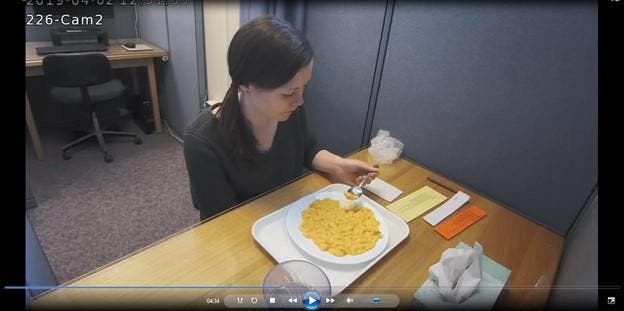
According to the National Institutes of Health, obesity and overweight together are the second leading cause of preventable death in the United States, close behind tobacco use. An estimated 300,000 deaths per year are due to the obesity epidemic.
In the United States, 36.5 percent of adults are obese and another 32.5 percent of American adults are classed as overweight. In all, more than two-thirds of adults in the United States are overweight or obese, part of a growing trend.
The factors that contribute to obesity en masse are complex and varied. Obviously, diet plays a major role, but so do behaviors surrounding eating. It was the latter that researchers at the Pennsylvania State University investigated in a new study, which found that people who eat faster or take larger bites are more likely to eat more at a meal.
“Although studies have consistently found that people eat more when they are served larger portions, less is known about why this happens or why some people are more responsive to the effects of large portions than others,” said first author Paige Cunningham, a doctoral student at Penn State. “This is one of the first studies to explore whether the characteristics of eating speed and bite size have an effect on people’s food consumption in response to larger portions.”
Cunningham and colleagues served 44 men and women lunch once a week for four weeks. Each meal consisted of a different portion of macaroni and cheese, in random order, along with 700 ml of water to drink. Each meal was video recorded in order to assess the speed with which the participants finished a meal (grams/min) and the size of their bites (grams/bite).
There were only four possible meal sizes that were rotated among the participants and on different days, meaning they could easily be compared. Although the sample size was quite small, the participants were diverse in terms of age, sex, body weight, income, and education, so the researchers believe that their results can be generalized to other groups.
Another important finding was that participants ate, on average, 43% more when the portion size of a meal was increased by 75%. According to the researchers, this fact may be influenced by microstructural behaviors such as eating rate, bite size, bite count, and meal duration.
“Based on our findings, being aware of portion size, slowing down when you eat and taking smaller bites of food could help avoid overconsumption,” said Cunningham. “Also, since people eat more when served more, overconsumption of calories from large portions can be reduced by choosing foods that have less calories per bite. This lets you eat the same filling portions of foods while consuming fewer calories.”
The findings were reported at the NUTRITION 2021 LIVE ONLINE conference.









